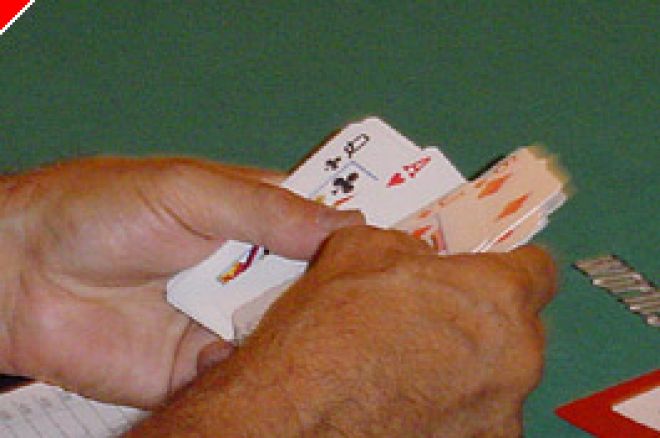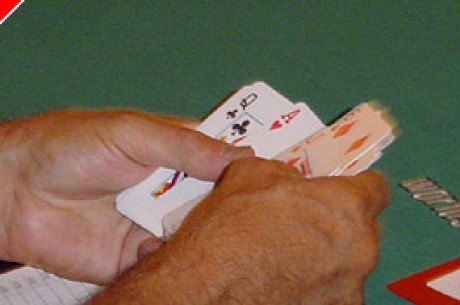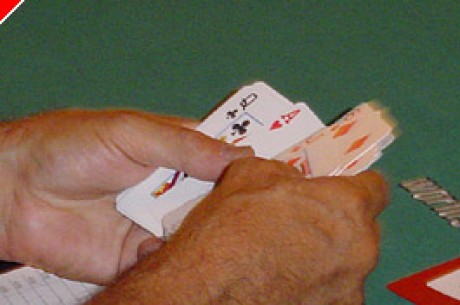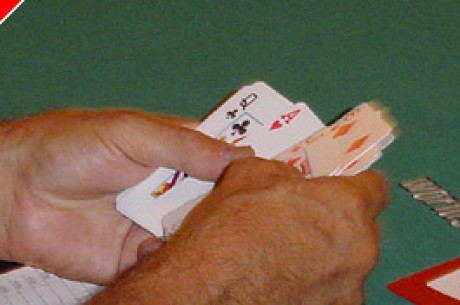Stud Poker Strategy - Are You Doggin' It? - Part 1

I drove down to Foxwoods' poker room early one Sunday morning this winter to play some stud. It really is the best place in the world to go for stud action. Thank goodness I live within two hours of the place. What would I do if it were a room in Macau?
By the time I reached the room and was ready to play there was a list. I waited patiently for a seat in either $10/20 or $20/40 (the $75/150 game with open seating was too rich for my blood). While I waited I had occasion to watch some of the action at a $10/20 table where a friend of mine was seated.
Poker is admittedly much more fun to watch with the ability to see all of the down cards as you do on TV. Even so, I found it interesting to stand behind this one particularly loose player to get a bead on his play. He repeatedly called bets that I would typically fold. He was a serious underdog. (Or, as I put it in my title to this column, he was "doggin' it"). I decided to clock his action and see exactly how good or bad his chances of beating what I presumed his opponent's hand was. I didn't think he would care to find out how big an underdog he was. But I thought you all might be interested. So let me share my results, with some analysis thrown in for you to consider.
First of all, here are some of the hands he called with:
Against a raising King, he called with (2?A?)8?. His cards were not all suited and I don't think there were even two of one suit. Remember, I was just catching a quick glimpse of his hand (I couldn't be too conspicuous) so my notes aren't going to record all possible information �C my apologies.
A few hands later, against a raising Ace he called with (7?9?)7?.
And then, against another raising King he called with (6?6?)A?
My first question was, if his opponents were raising for value with a split pair, how far behind was he. In other words, if his opponent had a pair of Kings in the first example, what percentage of the time would his (2?A?)8? end up winning if the hand was played to a showdown.
I realize that there's a possibility that his opponent was bluffing or semi-bluffing. But I'm going to consider that later. I also realize that an attentive player, as most of you are I presume, would pay close attention to the folded cards �C and how live each player's cards were. I'll deal with that later as well.
For now, let's assume that all cards are completely live, that the raise indicated the true strength of the raiser's hand, and that none of the cards were suited. We'll deal with the difference that other players remaining in the hand would make and a couple of other intangibles. And finally we'll try to put it all together and see when and how such a call might be justified. But for now, let's start with something very, very simple.
In the first instance, his opponent raised with a King and he had exactly (2?A?)8?. He had one overcard to his opponent's presumed pair of Kings. What were the chances that if the hand went to conclusion he would end up with a better hand than his opponent?
With that match up, he was roughly a 3:1 underdog. He would win roughly 25% of the time and lose about 75% of the time if the hand was just dealt out from there until the River. (I thank my friends at twodimes.net for providing the software that enables this calculation).
Dead cards, suited cards, unseen kickers surely change the chances of winning. But in general, if the cards are equally live, the player with the Ace overcard is about a 3:1 dog.
The second example is not as bad for the player. (7?9?)7? against a pair of Aces is a little better than a 2:1 dog, winning 37% and losing 63% of the time. Once again, if two of the player's cards are suited, it makes a very small difference �C increasing his winning percentage about one and a half percent. But if one of the Aces is dead, it makes the odds more like 40% to 60% for the players pair of 7s hand.
The final example of a raising King with a concealed pair and an exposed Ace breaks down as follows. The sixes are still an underdog to the presumed pair of Kings, but it's considerably closer than the prior examples. The (6?6?)A? hand will win roughly 42% of the time, versus 58% of the time for the Kings. If the Ace is suited to one of the 6s the chances improve by about one and a half percent �C and that presumes that the Kings aren't suited to the kicker in the opponent's hands.
All in all, the player who called against the raising hand did so as a considerable underdog �C even in the final example. If poker were only a game of deciding if you were an underdog at the moment against the presumed hand of an opponent, the obvious decision would be to fold. The caller would have been making a mistake.
But poker is much more complex than that. First of all, his opponent, though representing a strong hand, may have been bluffing. When he raised with an Ace he may not have had a pair of Aces. In my next column we'll look at how bluffing and semi-bluffing come into play when figuring out if a call makes sense.








